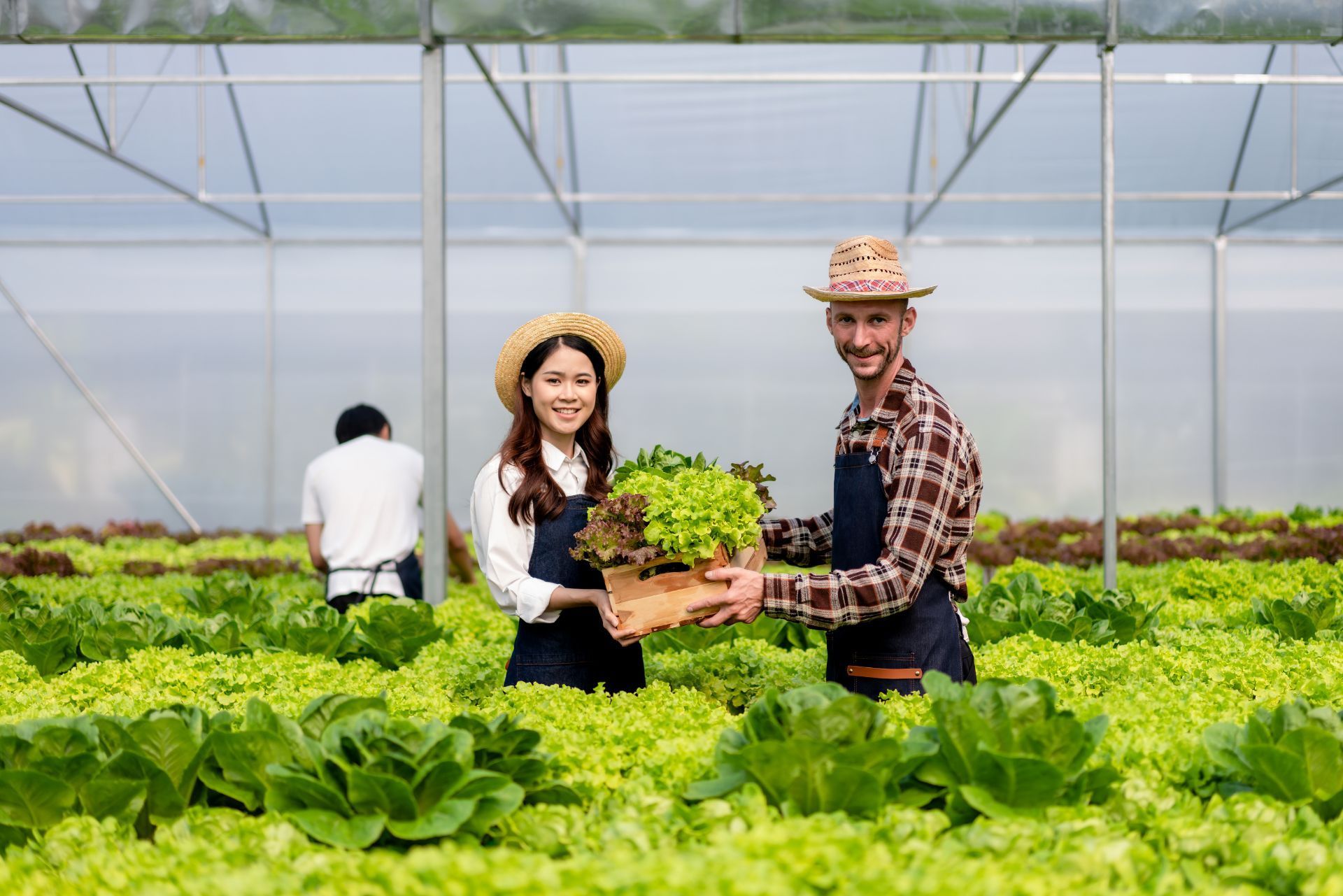
Top 3 Recommended Policies

Agritainment, the fusion of agriculture and entertainment, has blossomed into a thriving sector that offers unique experiences combining farm life with tourism. From pumpkin patches and corn mazes to farm-to-table dinners and petting zoos, agritainment attracts millions of visitors annually, providing farmers with diversified income streams and communities with authentic rural experiences.
However, as this sector grows, so do the risks associated with hosting visitors on working farms and ranches. Agritainment insurance plays a crucial role in protecting operators from financial losses due to accidents, property damage, or liability claims. This ultimate guide explores everything you need to know about agritainment insurance—from understanding its importance to navigating coverage options and best practices for risk management.
What Is Agritainment and Why Is It Growing?
Agritainment, sometimes called agri-tourism, involves inviting the public onto agricultural properties for recreational, educational, or entertainment purposes. This can include activities such as hayrides, corn mazes, farm festivals, U-pick operations, horseback riding, and more.
The rise of agritainment is driven by several factors:
- Consumer demand for authentic experiences: Modern consumers increasingly seek connection to food sources and rural lifestyles, fueling interest in farm visits and hands-on activities.
- Farm diversification: Many farmers face fluctuating commodity prices and seek supplementary income streams. Agritainment offers a way to leverage existing assets and infrastructure.
- Local and regional tourism growth: Agritainment fits well within broader trends of sustainable, local, and experiential tourism, attracting visitors to rural areas.
According to the USDA, agritourism revenue in the United States reached over $950 million annually in recent years, with steady growth expected. This trend is mirrored globally, from wine tours in Europe to farm stays in Asia.
In addition to providing entertainment, agritainment serves an educational purpose, allowing visitors to learn about sustainable farming practices, organic agriculture, and the importance of biodiversity. Many farms offer workshops and demonstrations that teach skills such as canning, cheese-making, or even beekeeping. These experiences not only enhance the visitor's understanding of food production but also foster a greater appreciation for the hard work and dedication that goes into farming.
Moreover, agritainment can significantly benefit local economies. By attracting tourists to rural areas, farms can stimulate demand for nearby restaurants, lodging, and other local businesses. This symbiotic relationship helps to create a vibrant community atmosphere, where visitors and residents alike can engage in cultural exchanges and support one another. As agritainment continues to evolve, it has the potential to become a cornerstone of rural economic development, ensuring that agricultural lands remain viable and productive for generations to come.
Understanding the Risks in Agritainment Operations
While agritainment offers exciting opportunities, it also introduces a complex risk landscape. Farms open to the public face hazards that differ significantly from traditional agricultural risks. The blend of agricultural practices with entertainment creates unique challenges that operators must navigate to ensure the safety of their guests while maintaining a profitable business.
Common Risks Faced by Agritainment Operators
Some of the primary risks include:
- Personal injury: Visitors may slip, trip, or fall; children might interact with animals; or guests could get injured on equipment or rides.
- Property damage: Equipment breakdown, fire, vandalism, or weather-related damage can disrupt operations and cause financial loss.
- Product liability: Food served on-site or products sold may cause illness or allergic reactions, leading to claims.
- Environmental risks: Contamination, pesticide exposure, or waste management issues can result in regulatory fines or lawsuits.
- Business interruption: Weather events, pandemics, or other disruptions can halt operations and income flow.
Understanding these risks is essential to selecting appropriate insurance coverage and implementing effective safety protocols. Agritainment operators must also consider the importance of staff training and emergency preparedness. Regular training sessions can equip employees with the knowledge to handle various situations, from first aid responses to managing guest behavior. Moreover, having a comprehensive emergency plan in place can significantly mitigate the impact of unforeseen events, ensuring that both guests and staff remain safe.
In addition to these operational challenges, agritainment businesses must also stay informed about regulatory changes that can affect their operations. Compliance with local health and safety regulations is crucial, as failure to adhere to these standards can lead to fines or even closure. Engaging with local agricultural and entertainment associations can provide valuable resources and updates, helping operators stay ahead of potential legal and safety issues. By fostering a culture of safety and compliance, agritainment operators can create a welcoming environment that encourages repeat visits and positive word-of-mouth, ultimately contributing to long-term success.

What Does Agritainment Insurance Cover?
Agritainment insurance is a specialized form of coverage tailored to the unique needs of farms and ranches that open their doors to the public. It typically combines elements of farm insurance, commercial liability, and property insurance. This type of insurance is essential for agritainment businesses, as it not only safeguards the physical assets of the farm but also protects against the various risks associated with hosting visitors, ensuring that both the farm operators and their patrons can enjoy the experience with peace of mind.
Key Coverage Components
- General Liability Insurance: Protects against claims of bodily injury or property damage suffered by visitors or third parties while on the farm premises.
- Property Insurance: Covers physical assets such as buildings, equipment, crops, and livestock against risks like fire, theft, or natural disasters.
- Product Liability Insurance: Provides protection if food or products sold cause harm or illness to customers.
- Commercial Auto Insurance: If vehicles are used to transport visitors or goods, this coverage protects against accidents and damages.
- Workers’ Compensation: Covers employee injuries sustained during work, which is critical if the farm employs seasonal or full-time staff.
- Business Interruption Insurance: Offers compensation for lost income if the agritainment operation must temporarily close due to covered events.
Some insurers also offer specialized endorsements or riders for unique agritainment activities such as petting zoos, hayrides, or corn mazes. These additional coverages can be crucial for farms that provide interactive experiences, as they address specific liabilities associated with these activities. For instance, a petting zoo may require coverage for animal-related injuries, while a corn maze could necessitate protections against accidents that occur during the maze experience. Furthermore, as agritainment continues to evolve, many farms are expanding their offerings to include events like weddings, corporate retreats, or educational workshops, which may require further customization of their insurance policies to ensure comprehensive coverage.
Moreover, agritainment insurance can also encompass coverage for food and beverage services, which are increasingly popular among visitors looking to enjoy farm-fresh produce or locally sourced meals. This aspect of coverage is vital, as it helps mitigate risks associated with food safety and potential health claims. Additionally, farms that host events may also need to consider liquor liability insurance if they serve alcohol, which adds another layer of complexity to their insurance needs. As the agritainment industry grows, staying informed about the latest insurance options and requirements becomes essential for farm owners to protect their investments and provide a safe environment for their guests.
How to Choose the Right Agritainment Insurance Policy
Selecting the appropriate insurance policy requires careful consideration of the specific activities, scale, and location of the agritainment operation.
Assess Your Risks Thoroughly
Start by conducting a detailed risk assessment. Identify all visitor activities, potential hazards, and existing safety measures. Understanding your risk profile helps determine the necessary coverage limits and exclusions. For instance, if your agritainment venue includes activities like hayrides, petting zoos, or corn mazes, each of these presents unique risks that must be evaluated. Consider factors such as the age of your visitors, the types of equipment used, and the seasonal nature of your business, as these can all influence the likelihood of accidents and the severity of potential claims.
Work With Experienced Insurers
Not all insurance companies understand the nuances of agritainment. Seek out insurers or brokers specializing in agricultural or tourism-related coverage. They can tailor policies to your needs and advise on emerging risks. An experienced insurer will not only provide insight into standard coverage options but also help you navigate the complexities of liability insurance, property coverage, and business interruption insurance. Additionally, they can assist in developing a comprehensive risk management plan that includes safety training for staff and emergency response protocols, ensuring that you are well-prepared for any unforeseen incidents.
Compare Coverage and Costs
While price is important, the cheapest policy may not offer adequate protection. Compare coverage limits, deductibles, exclusions, and claim processes. Look for policies that provide flexibility as your business evolves. It’s also wise to inquire about endorsements or riders that can enhance your coverage, such as those that address specific attractions or events you may host throughout the year. Furthermore, understanding the claims process is crucial; a policy with a complicated or lengthy claims procedure can lead to delays in receiving the support you need after an incident.
Consider Legal and Regulatory Requirements
Some states or municipalities require specific insurance coverage for public attractions. Ensure compliance to avoid penalties or closure. Familiarize yourself with local laws, as they can vary significantly and may include requirements for liability limits, worker’s compensation, and even specific types of insurance for certain activities. Additionally, staying informed about changes in legislation or regulations that affect agritainment can help you proactively adjust your insurance coverage, ensuring that you remain compliant and protected against potential legal challenges.
Risk Management Strategies Beyond Insurance
Insurance is a vital safety net, but proactive risk management reduces the likelihood of claims and enhances visitor safety. By implementing a comprehensive risk management strategy, organizations can not only protect their assets but also foster a culture of safety that resonates with visitors, encouraging repeat business and positive word-of-mouth.
Implement Safety Protocols
Establish clear safety guidelines for all activities. This includes proper signage, staff training, supervised animal interactions, and maintenance of equipment and facilities. Additionally, it is crucial to regularly review and update these protocols to reflect any changes in regulations or operational practices. Engaging staff in safety meetings can also enhance their awareness and commitment to maintaining a safe environment, as they become more invested in the protocols they help create.
Visitor Education
Inform visitors about potential hazards and expected behaviors. Providing orientation sessions, brochures, or verbal instructions can mitigate risky conduct. Consider using interactive methods, such as safety demonstrations or engaging videos, to capture the attention of visitors and reinforce key messages. Tailoring educational materials to different age groups can also ensure that everyone, from children to adults, understands the importance of adhering to safety guidelines while enjoying their experience.
Regular Inspections and Maintenance
Conduct routine checks of buildings, rides, fences, and other infrastructure. Promptly address hazards such as loose boards, slippery surfaces, or malfunctioning equipment. Keeping a detailed log of inspections and maintenance activities can help track patterns over time, allowing for proactive measures to be taken before issues escalate. Involving a third-party inspector can also provide an unbiased perspective on safety practices and highlight areas for improvement that internal staff may overlook.
Emergency Preparedness
Develop and rehearse emergency response plans for incidents such as injuries, fires, or severe weather. Ensure staff are trained in first aid and communication protocols. Regular drills not only prepare staff for real-life scenarios but also help to identify any gaps in the emergency plan that need addressing. Establishing clear communication channels for both staff and visitors during an emergency can significantly reduce panic and confusion, ensuring a more effective response. Additionally, investing in emergency equipment, such as defibrillators and first aid kits, and ensuring they are easily accessible can save lives in critical situations.
Case Studies: Agritainment Insurance in Action
Real-world examples illustrate how agritainment insurance protects operators and supports business continuity.
Case Study 1: Pumpkin Patch Liability Claim
A family visiting a popular pumpkin patch experienced a fall on a muddy trail, resulting in a broken wrist. The farm’s general liability insurance covered medical expenses and legal fees, preventing significant financial hardship for the operator. This incident prompted the farm owner to reassess safety measures, leading to the installation of improved signage and regular maintenance of pathways. By proactively addressing these issues, the pumpkin patch not only enhanced visitor safety but also fostered a culture of care and responsibility that resonated with their clientele, ultimately boosting customer satisfaction and loyalty.
Case Study 2: Fire Damage at a Corn Maze
A fire caused by electrical issues destroyed part of a corn maze attraction during peak season. Property insurance and business interruption coverage enabled the farm to rebuild and compensate for lost revenue while closed. The owner took this opportunity to upgrade the maze design, incorporating new themes and attractions that drew even larger crowds upon reopening. Additionally, the incident led to the implementation of stricter safety protocols, including regular inspections of electrical systems and enhanced training for staff on emergency preparedness. This not only safeguarded the farm's assets but also reassured visitors about their safety during their adventures.
Case Study 3: Foodborne Illness at Farm-to-Table Event
Several guests at a farm-hosted dinner became ill due to contaminated produce. Product liability insurance covered the resulting claims, protecting the farm’s assets and reputation. In the aftermath, the farm took decisive action by collaborating with local health authorities to investigate the source of contamination. This transparency not only helped to identify and rectify the issue but also demonstrated the farm's commitment to food safety. Furthermore, the farm introduced a rigorous quality control program that included regular testing of produce and enhanced training for staff on safe handling practices. As a result, the farm not only restored trust among its patrons but also positioned itself as a leader in food safety within the agritainment sector, attracting more health-conscious consumers to its events.

Trends and Future Outlook for Agritainment Insurance
The agritainment sector continues to evolve, and insurance products are adapting accordingly.
Increasing Demand for Customized Policies
As agritainment offerings diversify, insurers are developing more tailored policies that address specific activities like zip-lining, horseback riding, or educational workshops.
Technology Integration
Use of drones, online booking platforms, and digital payment systems introduces new risks and coverage needs, prompting insurers to update policy terms.
Focus on Sustainability and Environmental Risks
With growing emphasis on sustainable agriculture, insurance products are beginning to incorporate coverage for environmental liabilities and climate-related risks.
Regulatory Changes
Governments may impose stricter safety and insurance requirements as agritainment grows, making compliance a critical focus for operators.
Conclusion: Protecting Your Agritainment Business with the Right Insurance
Agritainment offers exciting opportunities for farmers and rural communities to engage visitors and generate income. However, opening your farm to the public comes with unique risks that require specialized insurance coverage and proactive risk management.
Understanding the types of coverage available, assessing your specific risks, and partnering with knowledgeable insurers are essential steps to safeguard your operation. Combined with strong safety protocols and visitor education, agritainment insurance helps ensure your farm remains a safe, enjoyable destination for years to come.
By investing in comprehensive insurance and risk mitigation strategies, agritainment operators can confidently grow their businesses while protecting their livelihoods and guests.
Contact Us

